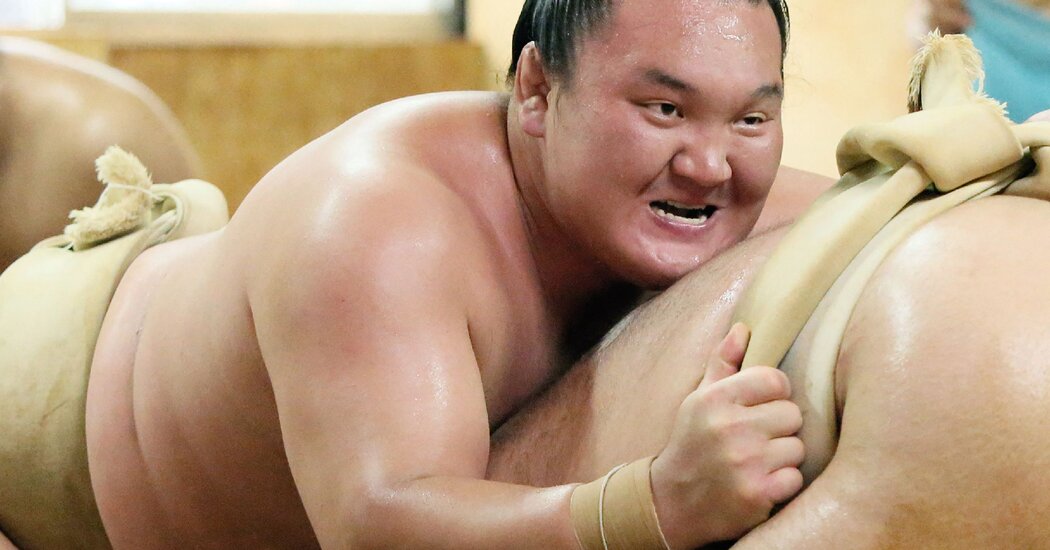
The most accomplished sumo wrestler in history is calling it a career at age 36.
Hakuho, a native of Mongolia who came to Japan to pursue sumo at age 15, retires with more top-level championships, or yusho, than anyone in the sport’s history.
He won his first title at the elite makuuchi level in 2006. A year later he earned the revered title of yokozuna, reserved for the greatest champions.
Hakuho went on to win at least one of the six annual top tournaments every year since, and usually did better than that: In 2010 and 2014, he won five of six. In 2015, he broke the record of 32 top-level wins set by Taiho in 1971. (Sumo’s history goes back 1,000 years, but the sport’s tournament system began in 1909.)
In recent years, though, Hakuho has struggled with a knee injury, and he tested positive for coronavirus in January, causing him to miss tournaments. He was warned by the sumo authorities that missing so many events might lead to forced retirement.
But he rolled back the years in July in Nagoya, in his only tournament of the year, to take his 45th career title. In top tournaments, each wrestler has a bout each day for 15 days. Hakuho won his final event with a 15-0 record. It was his 16th “perfect victory,” as a tournament with no losses is called, also a record.
Hakuho’s prowess and record are undeniable. But he sometimes ruffled feathers in his tradition-laden sport. In 2019, he urged the audience to clap after a tournament. But because the official ceremonies were not yet over, this was seen as breach of etiquette, and he was admonished by the sumo authorities.
He has also been criticized for rough tactics, including excessive slapping in the face and giving extra shoves after a bout was over, as recently as his valedictory win in July. He has also been faulted for a maneuver in which he sidesteps a charging opponent whose momentum then carries him out of the ring: a legal move, but one considered not in the spirit of sumo, which values head-to-head confrontation.
“Being a yokozuna comes with greater responsibility, including acting as a role model,” Hironori Yano, the head of the Yokozuna Deliberation Council, said in 2019.
Hakuho, at 6 feet 4 inches and 350 pounds, is a big man by most measures, but not enormous in sumo. His chief rival in recent years, Terunofuji, weighs more than 400 pounds.
Born Mönkhbatyn Davaajargal, like other wrestlers he was given a single ring name: Hakuho means the White Peng, a giant bird of Japanese myth.
He was the latest success story from Mongolia, which has produced many of the best sumo wrestlers of the century. A sport so intrinsic to Japan’s history and culture underwent a seismic shift in the 1990s when the first successful foreigners emerged, first Hawaiians and then Mongolians.
“Before the tournament, I never expected to win the championship with a record of no defeats at this age; I’m just relieved,” Hakuho said after his victory in July. “But with this victory, I am feeling I can fight again.”
But he missed the next tournament, this month, after several wrestlers in his stable tested positive for the coronavirus. And age and injuries have finally led him to call a halt to his career.



